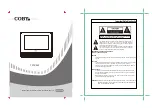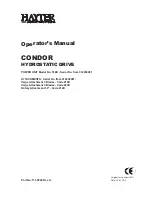
Configuring the internal baseband source
R&S
®
SMM100A
181
User Manual 1179.1341.02 ─ 05
The tag specifies the clock frequency at which the waveform has to be output, in Hz
(on multi-segment waveforms this tag contains the maximal clock of all segments).
A query of
ARB:CLOCk?
after loading the waveform returns the value set using the
CLOCK
tag. This value can later be altered with the command
ARB:CLOCk?
.
Example:
{CLOCK: 54000000}
BB:ARB:WAV:TAG? 'CLOCK'
Queries the content of the
CLOCK
tag.
Response: 54000000
The clock frequency is set to 54 MHz.
Usage:
Setting only
{CONTROL LENGTH: ControlLength}
(optional / recommended for marker and control lists)
The tag specifies the length of
all
control or marker list in ASCII format.
The control length influences the way the marker and control lists are processed, in
particular the way traces are repeated; see
.
Figure 4-18: Example: Processing of MARKER TRACE if CONTROL LENGHT is specified
If the
CONTROL LENGTH
tag is not used, the marker and control list length are deter-
mined by the last position, that is the last {
Pos
:State} couple, defined in the particular
[TRACE] LIST
tag; see
Figure 4-19: Example: Processing of MARKER TRACE if CONTROL LENGHT is not used
To maintain marker signals and waveform data synchronized, set the
CONTROL
LENGTH
to be equal to the number of samples specified with the tag
.
See also
Chapter 4.6.4.6, "How to define periodically repeating traces"
Using the arbitrary waveform generator (ARB)
















































